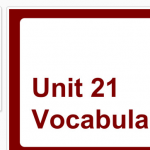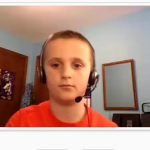Note: I realize that the blog title does not align well with my current career. Considering that it has been a few years since I published anything on this, I’m letting it ride for now.
They were right. I can’t imagine that any other young teacher and coach heard, “If you keep pushing like that, you’re going to burn out,” more than I did during the first seven years or so of my career. With the sweet intentions of the characters in “The Christmas Story” who warned Ralphie that he’d shoot his eye out, people lovingly let me know that the all-day Saturday sessions with elementary girls during the basketball season, plus activities like camps and scouting could lead me to want nothing more than to be done coaching. I didn’t believe them because, well, I was about 30 years old then.
Looking back now, I realize that the burnout wasn’t as much about the single candle, but rather all of the ways that I didn’t have any flame left for the rest of my life. In particular, the 2007-08 girls’ basketball season competed with my commitment to our family, and it was gut-wrenching. I distinctly remember wondering how it was that I could be in a gym with 300 people, many of whom I considered friends, and feel so alone. With our oldest son being in first grade and our youngest peeking around the corner of turning three, my husband reserved his presence at games for Friday nights, listened when our games were on the radio, and still rode every rise and fall of that season’s roller coaster, with more interpersonal dynamics threatening to rip the fabric of our team than normal. Our family knew that I was going to recommit to them and invest more fully as a teacher when that final horn expired our season. I told the girls in the locker room that night and can remember the two-hour bus ride home featured some hardcore reflection and communication, mostly by way of text messages.
Sure enough, I reinvented myself as a parent and educator beginning in March of 2008. I learned about and implemented primary sources in history, blogged, mentored, collaborated with people inside and outside of my school district, and discovered abundant leadership opportunities. Through all of this, I became a better teacher – and then, the restlessness struck in a different way. My husband and I migrated to another area school district in 2015, which eased transportation for our family as our sons became more entrenched with their activities. That fall marked the beginning of my doctoral coursework and, eventually, the shift into being a teacher educator.
Just as they warned me about burning out, they would ask me if I would coach again. My most frequent answer to that question was a laugh, and some kind of comment like, “No, I’m done raising girls and need to be more involved in raising these guys now,” gesturing to Grant and Carson. The utter satisfaction I felt sitting in the recliner on summer and winter nights, formerly filled with league and regular season games, was another feeling I referenced in dismissing a return. In the midst of interacting with female athletes in my teacher education courses, I began fielding this question differently. Rather than swiftly denying a potential return to the ranks with a stodgy response, I would offer the hum of hesitation. Hearing the stories of their experiences, seeing how they connected with my recollections, and recognizing that society needed more female coaches stirred me to question not who I was, but maybe who else I was now. Additionally, I wondered how parenting life, three more years of school as a student, writing a dissertation, and three years as a teacher educator had molded who I was, particularly how I perceived and communicated with others.
About 80 days into this “Coaching Career 2.0,” I type with a giant smirk on my face because this is even better than I could have hoped. Being an assistant coach is a blast, and I appreciate that the head coaches with whom I have worked are wearing out their soles, often behind the scenes, while hoping that my presence can, in some way, help fortify their coaching souls. It can be taxing because decision fatigue is real, even if you are one of the brilliant ones who generally decides in a manner that others applaud.
In addition to supporting the other coaches, thinking about ways that my actions must offer representation for these young women, and being mindful of how much the families and kids have entrusted me to be part of their lives through these days on the softball diamond and the basketball court, I sense that I don’t need to be warned about getting burned out. My past perceptions of this field did not account for any of these factors. For as much as I have changed, I have no doubt that I am going to get burned out again, so I’m not going to fight that; instead, I am embracing it. However long this occurs, I am more focused on lighting other candles this time.
Around the same time that I pondered this return, my personal and professional friend from the Minnesota Historical Society reached out to see if I would be willing to be interviewed for a Title IX project she was doing, seeking perspectives from women about the impact of sports on their lives. We had that conversation during a morning in the early days of the softball season. In a move unlike something that younger me would have done, I shared the experience in our post-practice huddle that afternoon. I wanted them to realize that the interview was a thing because these experiences were not a guarantee for those who grew up in the past.
The candle flickers because I am invested in these young women – every fist bump, every attempt to refine their skills, and every time we razz each other. This crew has invited that from our first days together, and I am grateful that so many of them are in both softball and basketball, so the settings vary and nuances abound. During my first years of coaching, I didn’t realize how much that flame is burning during all of the mundane things that happen in-between the memories of funny dugout conversations and heart-to-heart conversations in which we confront those “I’m not good enough” voices that they are hearing. How fortunate I am to be in this position with responsive athletes and a supportive family who endure all of the processing that I do when I am with them.
My understanding of being authentic and compassionate is deeper than it was during my initial stint of coaching. When I ask the girls, “What do you need?” as they are assembling for a competition, they know that everything is on the table. When they ask me, “What should I have done differently?” after a play, I offer my best take – and I don’t think “1996 Me” would even recognize the voice that speaks in 2022. Supplying oxygen for the flame and maintaining the wick is a deep sense of purpose, knowing that navigating adversity helps a person learn about themselves.
Writing this during the closing week of our summer adventures allows me a chance to take inventory of contributions I have made knowing that this new beginning “worked,” and that the future offers opportunities to support these fabulous young women as they progress as athletes and, more importantly, as people. I am emboldened to know that the pilot light is glowing again and that passing along the flame is the only action to take.








